Throughout history, humanity has crafted monumental structures that stand as testaments to our ingenuity, creativity, and desire to leave a lasting legacy. These architectural marvels, often referred to as the Seven wonders of the world have captivated imaginations for centuries. The concept of the Seven Wonders originated in ancient Greece, where travelers and scholars compiled lists of remarkable constructions that showcased the pinnacle of human achievement. Over time, this list has evolved, encompassing both ancient and modern wonders that continue to inspire awe and admiration.
1. The Great Pyramid of Giza (Egypt)
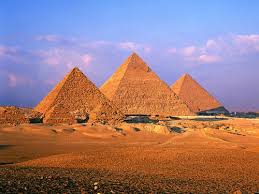
The Great Pyramid of Giza, located on the outskirts of Cairo, Egypt, is the only surviving wonder from the original Seven Wonders of the World. Built as a tomb for the Pharaoh Khufu around 2560 BCE, it originally stood at 481 feet (146.6 meters) tall, making it the tallest man-made structure for over 3,800 years. Constructed using approximately 2.3 million limestone blocks, each weighing an average of 2.5 tons, the pyramid’s precise construction techniques continue to be a subject of study and admiration. Its alignment with the cardinal points and the mathematical precision involved in its design reflect the advanced knowledge and skills of ancient Egyptian architects and laborers. My Modern Met+1Guinness World Records+1
2. The Great Wall of China (China)
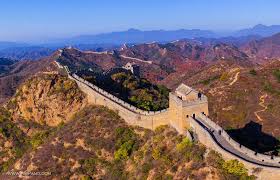
Stretching over 13,000 miles, the Great Wall of China is an awe-inspiring feat of engineering that traverses diverse terrains, from deserts to mountains it is definitely one of the seven wonders of the world. Construction began in the 7th century BCE, with significant contributions during the Ming Dynasty (1368–1644 CE). The wall was built primarily for defense, aiming to protect Chinese states from invasions by nomadic tribes from the north. Beyond its military function, the Great Wall also facilitated trade and communication across regions. Recognized as a UNESCO World Heritage Site, it stands as a symbol of China’s historical strength and perseverance. Safar Mentor
3. Petra (Jordan)
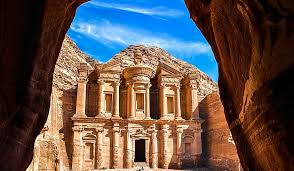
Petra, an ancient city carved into the rose-red cliffs of southern Jordan, was the capital of the Nabataean Kingdom in the 4th century BCE. Renowned for its rock-cut architecture and water conduit system, Petra showcases the ingenuity of the Nabataeans in adapting to and thriving in the arid desert environment. The city’s most iconic structure, Al-Khazneh (The Treasury), is a monumental tomb with intricate facades, reflecting a blend of Hellenistic and Eastern architectural styles. Petra’s strategic location along trade routes contributed to its prosperity, making it a melting pot of cultures and influences.
4. The Colosseum (Italy)
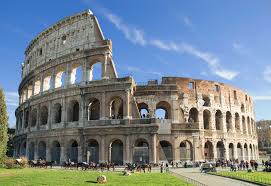
Situated in the heart of Rome, the Colosseum is an enduring symbol of ancient Roman engineering and entertainment. Completed in 80 CE under Emperor Titus, this amphitheater could hold up to 80,000 spectators who gathered to witness gladiatorial contests, mock sea battles, and other public spectacles. Constructed with concrete and stone, the Colosseum’s elliptical design and complex system of vaults and corridors allowed for efficient crowd control and dramatic entrances. Despite suffering damage from earthquakes and stone robbers, the Colosseum remains a testament to Rome’s architectural prowess and cultural significance.
5. Chichén Itzá (Mexico)
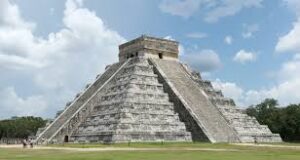
Chichén Itzá, located on Mexico’s Yucatán Peninsula, was a major city of the Maya civilization from the 7th to the 10th century CE. The city’s most prominent structure, El Castillo (The Castle), is a pyramid dedicated to the serpent god Kukulkán. During the spring and autumn equinoxes, the setting sun casts a shadow that resembles a serpent descending the pyramid’s steps, demonstrating the Maya’s advanced understanding of astronomy. Chichén Itzá also features the Great Ball Court, the largest and best-preserved in Mesoamerica, where ritual ballgames were played. The city’s layout and architecture reflect the Maya’s sophisticated urban planning and religious practices. Encyclopedia Britannica
6. Machu Picchu (Peru)
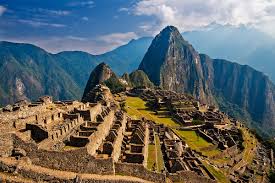
Machu Picchu, perched high in the Andes Mountains of Peru, is a 15th-century Inca citadel believed to have been built by Emperor Pachacuti. The site remained largely unknown to the outside world until its rediscovery by American explorer Hiram Bingham in 1911. Machu Picchu’s precise purpose remains a topic of debate, with theories ranging from a royal estate to a religious retreat. The site’s sophisticated dry-stone construction, terraced fields, and panoramic views exemplify the Inca’s architectural and agricultural expertise. Machu Picchu’s remote location and preservation amidst the surrounding cloud forest contribute to its mystique and allure. Encyclopedia Britannica
7. Christ the Redeemer (Brazil)
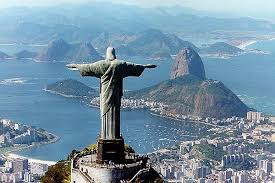
Standing atop Mount Corcovado in Rio de Janeiro, the Christ the Redeemer statue is an iconic symbol of Christianity and Brazilian culture. Completed in 1931, the 98-foot-tall (30 meters) statue is made of reinforced concrete and covered in approximately six million tiles. Designed by Brazilian engineer Heitor da Silva Costa and French sculptor Paul Landowski, the statue’s outstretched arms span 92 feet (28 meters), embracing the city below. Christ the Redeemer has become a global symbol of peace and unity, attracting millions of visitors annually who come to admire its grandeur and the breathtaking views of Rio de Janeiro. Encyclopedia Britannica
Conclusion
Seven Wonders of the World whether ancient or modern, are more than just architectural feats; they are embodiments of human aspiration, creativity, and resilience. Each wonder tells a unique story of the civilization that created it, reflecting their values, beliefs, and technological advancements. As we stand in awe of these magnificent structures, we are reminded of our shared heritage and the enduring legacy of those who came before us. The wonders continue to inspire and challenge us, urging future generations to dream big and build boldly.